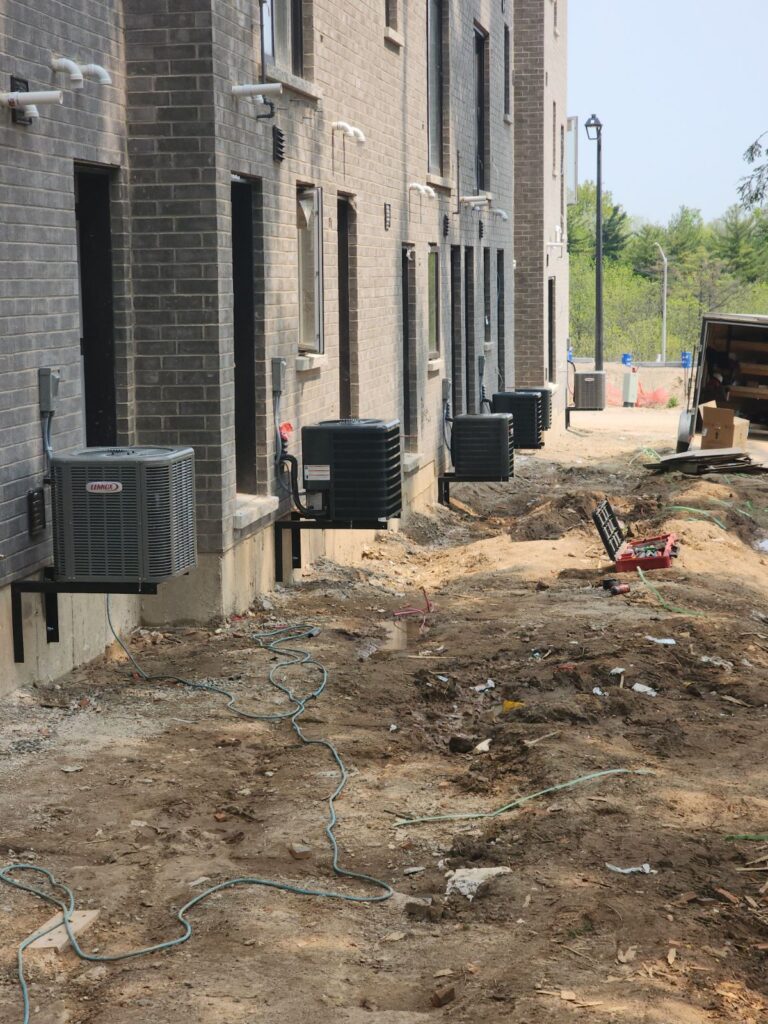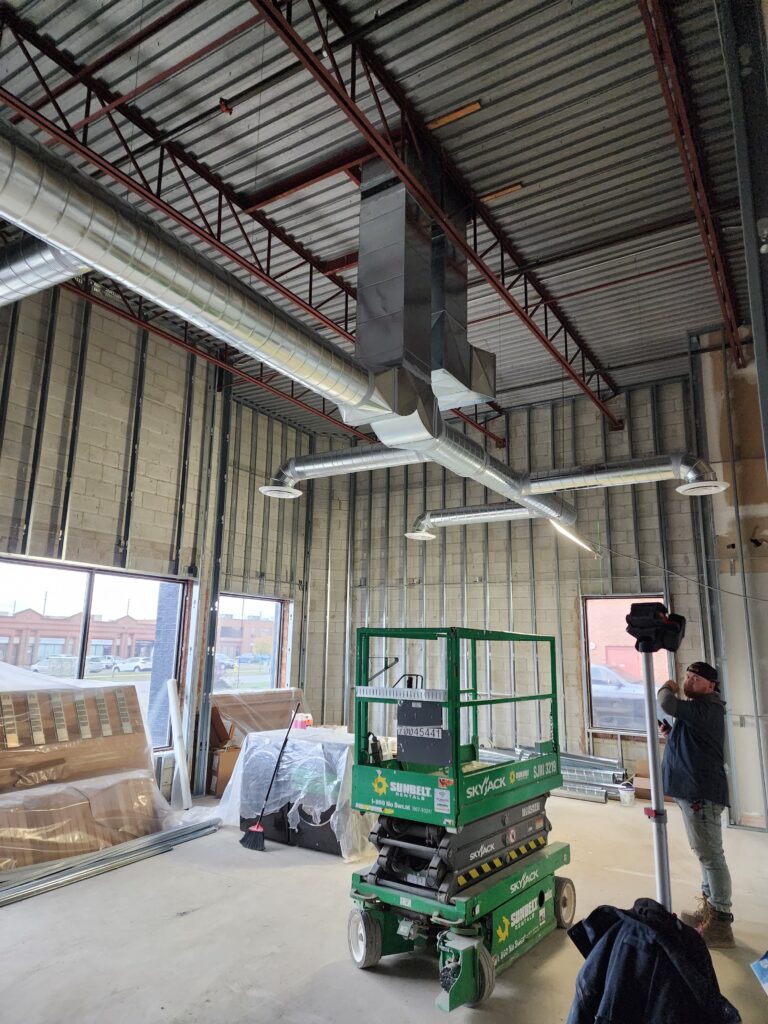Installations
Heating, ventilation, and air conditioning (HVAC) systems are essential for ensuring comfortable indoor temperatures, regardless of the season. As an HVAC technician, you have the opportunity to help people keep their homes or workplaces comfortable! One of the most common services you’ll provide is installing air conditioning units. In this guide, we’ll explore the essential equipment required for air conditioning installation.
Common HVAC Systems Used by Technicians
Air Conditioning Units
Air conditioning units are essential for creating a comfortable living environment during the hot summer months. As an HVAC technician, you will encounter different types of air conditioning units that require various levels of complexity in installation. Here are some of the most common types of air conditioning units:
- Window-Mounted AC Units: This type of AC unit is designed to fit in a window frame. Technicians will need to install brackets to secure the unit in place, ensuring it’s level, and then connect it to a power supply.
- Through-the-Wall AC Units: Very similar to window-mounted units, through-the-wall AC units are installed by cutting a hole in an exterior wall and fitting the unit in the opening. This type of installation requires more skill and care, but the result can be a cleaner, more aesthetically pleasing look.
- Central AC Units: Central air conditioning systems are installed as part of an overall HVAC system in a home. A central AC unit requires ductwork, a blower motor, refrigerant lines, and a thermostat. HVAC technicians will need to install all these components correctly.
- Ductless Split AC Units: Like central AC units, ductless split AC units require a blower motor, refrigerant lines, and a thermostat. However, these systems operate without ductwork, and the AC unit is installed in the wall, making it more aesthetically pleasing while still being effective.
Installation Process of AC Units
As an HVAC technician, it’s your responsibility to ensure air conditioning units are installed correctly. Here are the steps involved in installing an AC unit:
- Choose the proper type of air conditioning unit based on the needs and space of the building.
- Ensure you have all the necessary equipment tools on hand, such as a power drill, screwdrivers, pliers, measuring tape, and a level.
- Measure the space where the unit will be installed. This will ensure you choose the right-sized AC unit.
- If it’s not already present, install brackets to secure the unit. Ensure that the brackets are level so that the unit sits flush and doesn’t wobble.
- Connect the unit to the power supply.
- Test the AC unit to ensure it’s functioning correctly.

Furnaces
In addition to AC units, HVAC technicians also install furnaces to keep homes warm during the winter months. Here are the common types of furnaces:
- Gas Furnaces: Gas furnaces work by using natural gas as fuel to heat the air before it’s distributed through the home’s ductwork.
- Electric Furnaces: Electric furnaces use electricity to warm the air, which is distributed through the home’s ductwork.
- Oil Furnaces: Oil furnaces are far less common, but some homes still use them to heat their homes using oil as the fuel.
Installation Process of Furnaces
The installation of furnaces will depend on the type of furnace you are installing. Here are the general steps involved in installing a furnace:
- Choose the type of furnace that best suits the needs of the home.
- Ensure the installation location meets the manufacturer’s specifications.
- Install the unit according to the manufacturer’s instructions, taking care to connect all necessary electrical and gas lines.
- Install ductwork to circulate the warm air to the proper locations.
- Test the furnace to ensure proper functionality.
Thermostats
The thermostat is the control center of an HVAC system, and its installation is critical for an HVAC technician. Here are the types of thermostats:
- Manual Thermostats: Manual thermostats require the user to adjust the temperature by physically turning a dial or sliding a lever.
- Programmable Thermostats: Programmable thermostats allow the user to set a schedule that automatically adjusts the temperature based on their preferences.
- Smart Thermostats: These thermostats connect to the internet, allowing users to control the temperature from anywhere through their smartphone.
Installation Process of Thermostats
The installation of thermostats is generally straightforward, but HVAC technicians must take care to ensure they’re correctly installed and functioning correctly. Here are the general steps involved in the installation of thermostats:
- Choose the thermostat that best suits the needs of the home.
- Choose the location for the thermostat, ensure it’s in an optimal location to read the temperature.
- Install the thermostat according to the manufacturer’s instructions. Ensure that it’s level, securely fastened, and correctly wired to the HVAC system.
- Test the system to ensure the thermostat is functioning properly.
Accessories Used by HVAC Technicians
Ductwork and vents are a crucial component of any HVAC system, and their installation is a critical part of a technician’s work. HVAC technicians must have the knowledge and expertise to install ductwork and vents correctly. Here are the types of ductwork and vents
- Round Ductwork: This type of ductwork is used in more residential settings and is particularly useful when there’s limited space, making it challenging to install rectangular ductwork.
- Rectangular Ductwork: This type of ductwork is used in commercial and industrial settings as it can handle more significant air volumes.
- Grilles and Registers: Grilles and registers help distribute cold or warm air throughout the building.
Installation Process of Ductwork and Vents
The installation of ductwork and vents is essential, and it’s essential to be detailed and patient. Here are the critical steps involved in the installation of ductwork and vents:
- Measure and plan the layout of ductwork and vents. Take into consideration the size of the space, how many ducts are needed, and their locations.
- Cut the ductwork and vents. Assemble the ductwork and attach it to the HVAC equipment.
- Install the ductwork. Ensure that it’s properly secured and doesn’t have any leaks.
- Install grilles and registers. Ensure they’re properly attached and installed in the correct locations.
- Test the airflow from the grilles and registers to ensure optimal performance.


Additional HVAC Equipment
Humidifiers are critical for ensuring healthy indoor air quality as they help keep the air moist. HVAC technicians may need to install humidifiers depending on the need and the client’s request.
Air Purification Systems
Air purification systems help improve indoor air quality by removing dust, pet dander, and other allergens that negatively impact air quality. HVAC technicians can install these systems as an additional service.
Hot Water Heaters
Hot water heaters are not exclusively HVAC systems; however, they are often installed by HVAC technicians. Hot water heaters provide hot water for cleaning, cooking, and bathing, among other necessities.
Installing HVAC systems is complex and involves a range of tools, equipment, and expertise. HVAC technicians are therefore required to have the knowledge needed to ensure appropriate HVAC installation to enhance indoor air quality and temperature comfort for clients. With this guide, you now have a better understanding of the essential equipment required for HVAC installation, and as an HVAC technician, you’ll be one step closer to providing comfortable and healthy living or working environments for clients.